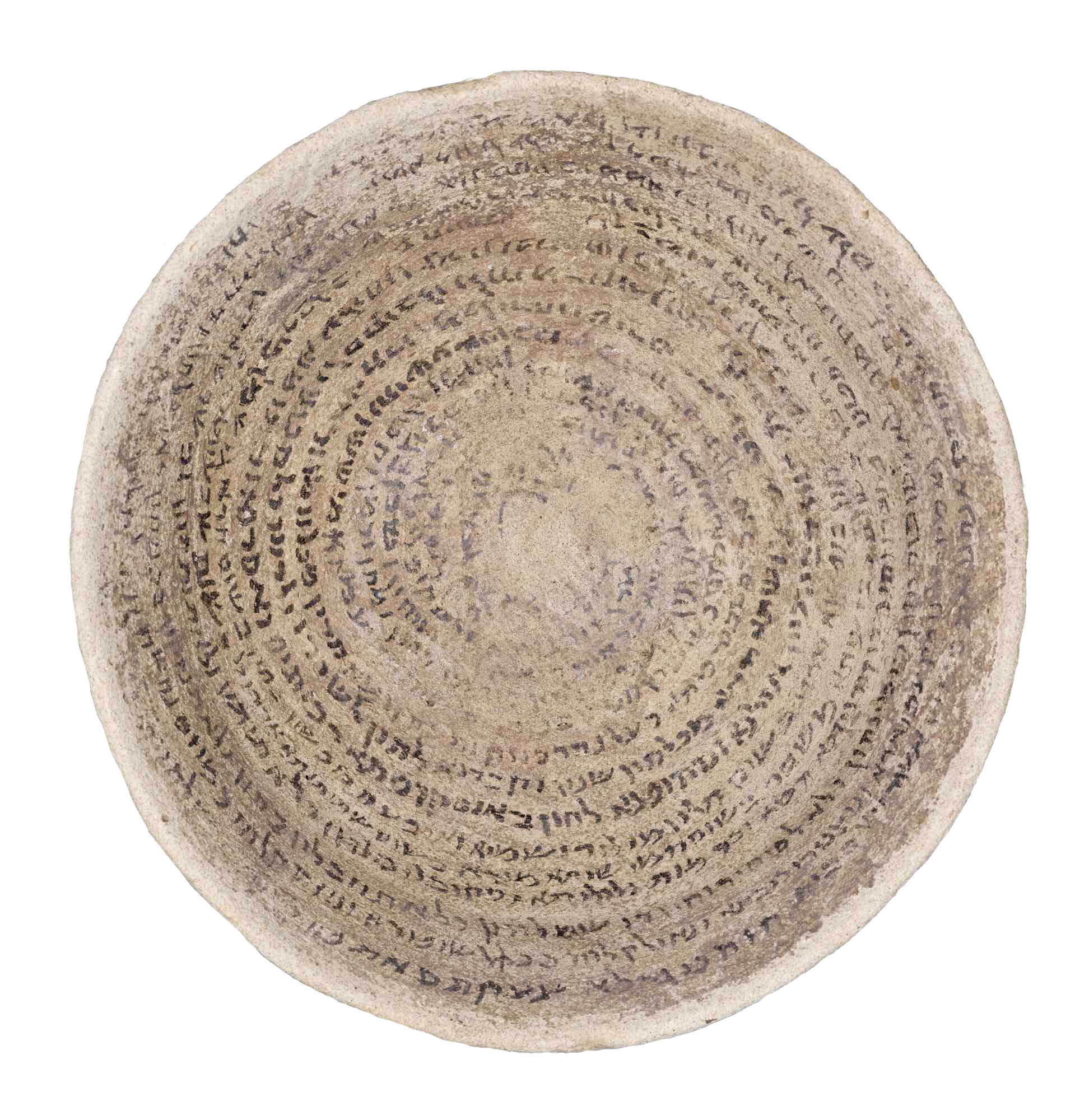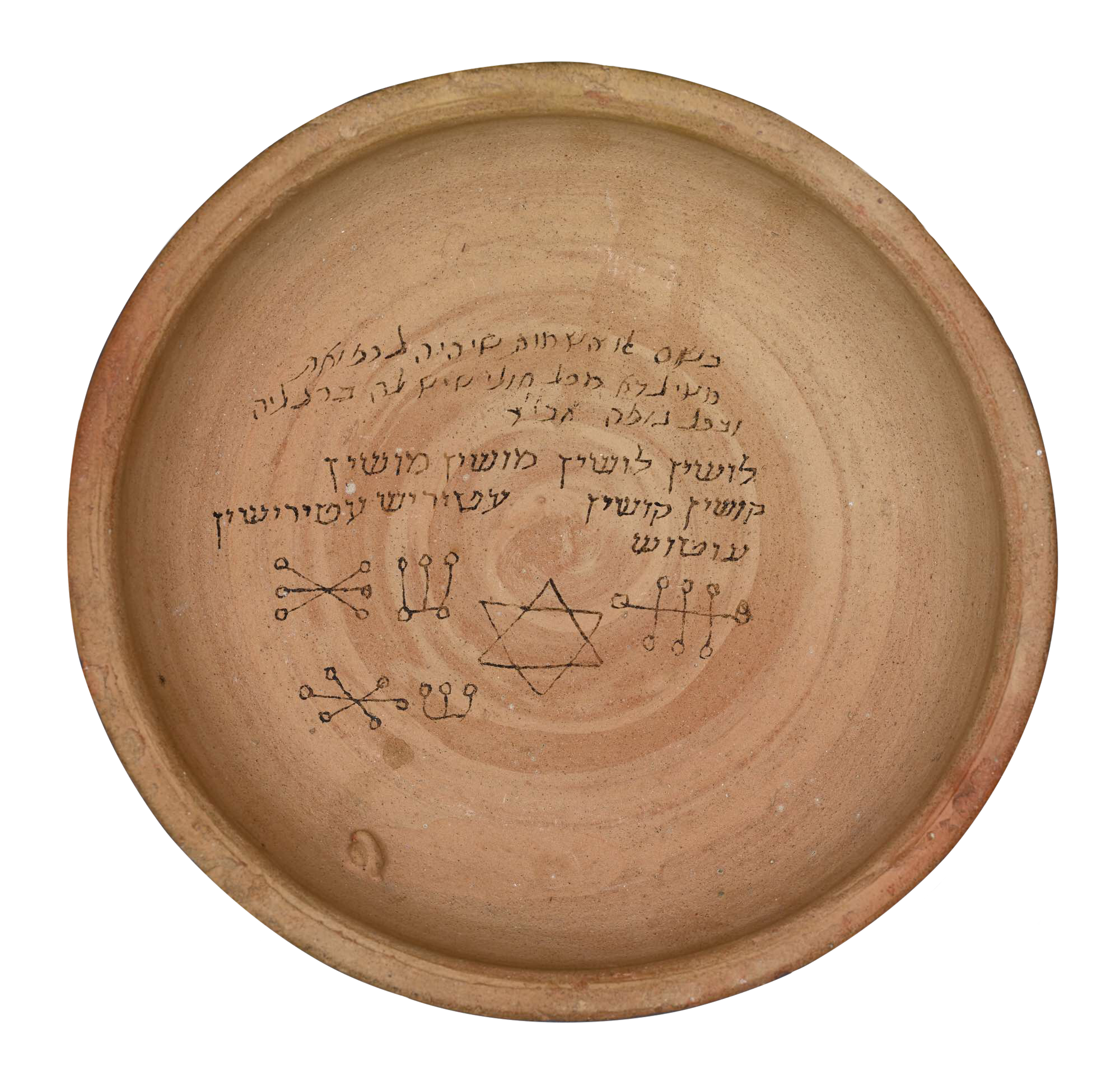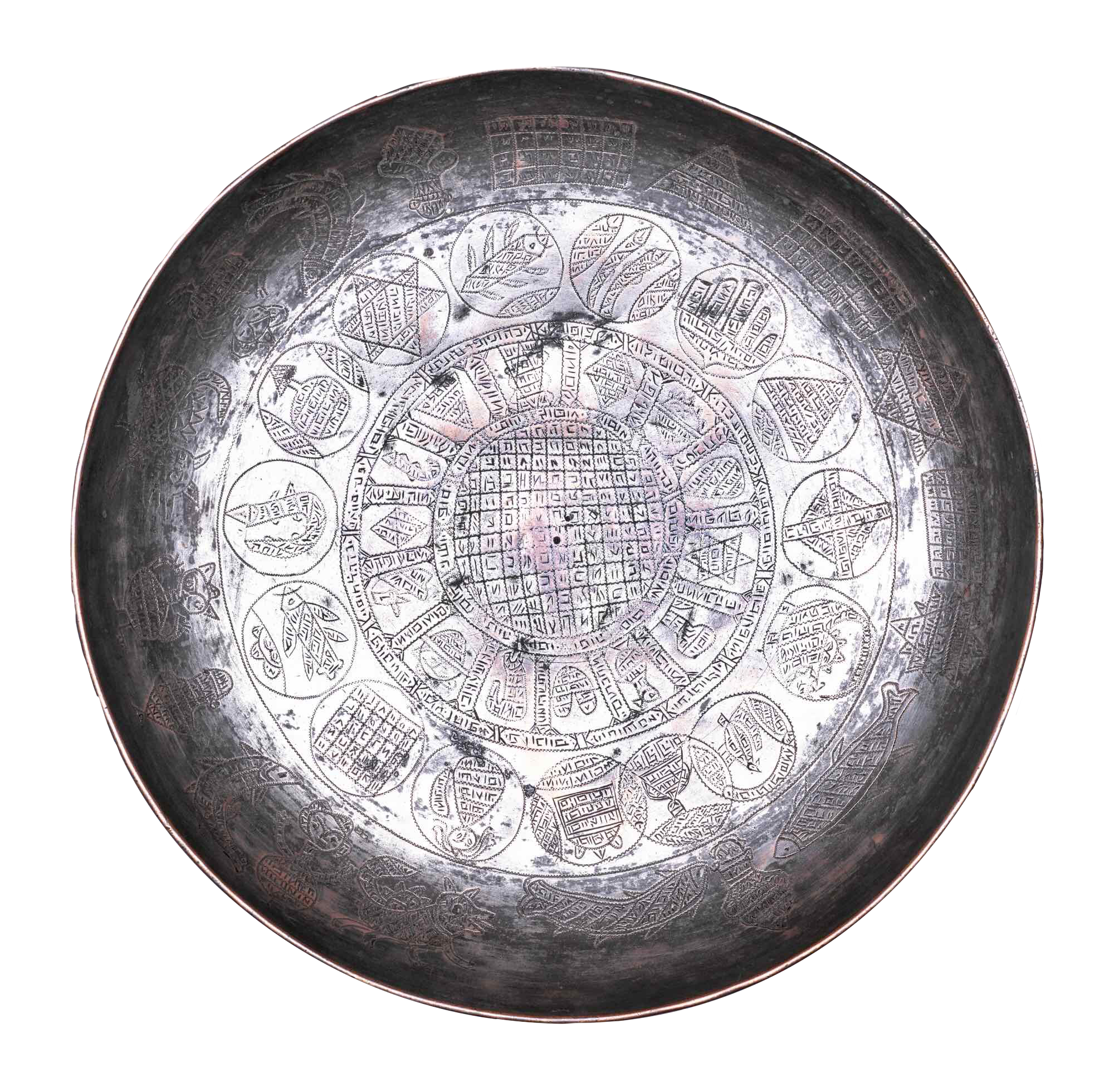(Ciotola per gli incantesimi)

Ciotola con scritti degli incantesimi.




“Jewish Amulets from Eastern Europe: A Multicultural Approach”, lecture given by Daniela Schmid, of Dr Ariel Muzicant Collection, Vienna, at the conference: Constructing and Deconstructing Jewish Art, Bar-Ilan University and the Israel Science Foundation, September 2015.
Bohak, Gideon. “Ke’arot Hahashva’a Habavilyot: Avar, Hoveh Ve’atid [Babylonian Incantation Bowls: Past, Present and Future].” Pe’amim: Studies in Oriental Jewry, 105/106, Yad Izhak Ben Zvi, 2005-2006, pp. 253-65.
Bohak, Gideon. “Jewish Amulets, Magic Bowls, and Manuals in Aramaic and Hebrew.” Guide to the Study of Ancient Magic: Religions in the Graeco-Roman World, ed. by David Frankfurter, Leiden: Brill, 2019, pp. 388-415.
Shaked, Shaul. “Transmission and Transformation of Spells: The Case of the Jewish Babylonian Aramaic Bowls.” Continuity and Innovation in the Magical Tradition. Jerusalem Studies in Religion and Culture, ed. Gideon Bohak et al, vol. 15, Leiden: Brill, 2011, pp. 187-217.
Shaked, Shaul et al. Aramaic Bowl Spells: Jewish Babylonian Aramaic Bowls Volume One. Leiden: Brill, 2013.
Vilozny, Naama. Śeʻarot Lilit ṿe-ḳarne Ashmedai: demut ṿe-tsurah ba-magyah uva-omanut ha-ʻamamit ben Bavel le-Erets-Yiśraʼel be-shilḥe ha-ʻet ha-ʻatiḳah [Lilith’s Hair and Ashmedai’s Horns: Figure and Image in Magic and Popular Art: Between Babylonia and Palestine in Late Antiquity]. Jerusalem: Yad Yitshak Ben Zvi, 2017.
Seleziona una lingua